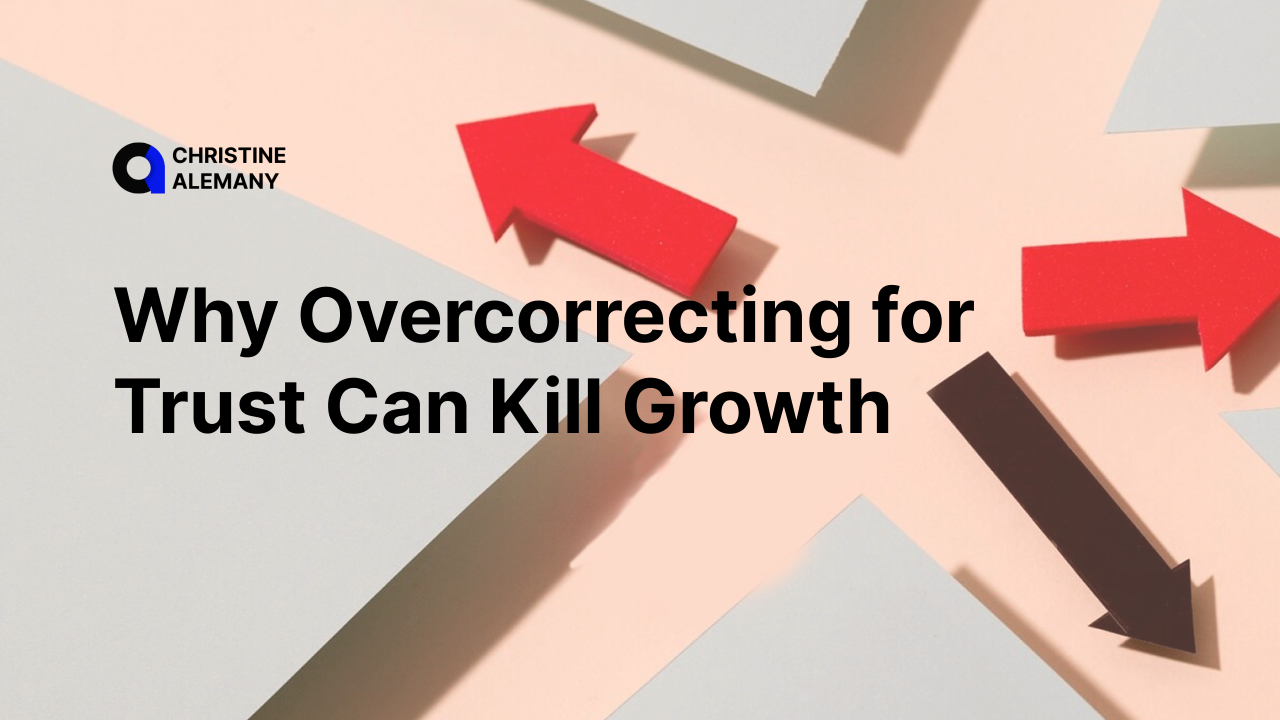Why Overcorrecting for Trust Can Kill Growth
Mar 03, 2025
Trust is the holy grail of growth—or so we’re told. Build a flawless reputation, the experts (including me) preach, and customers will flock to you. But what if trust isn’t always the starting line?
Sometimes, momentum creates trust faster than morality ever could. Uber scaled to a $70 billion titan by its SoftBank-led funding round in 2017, not by perfecting its image, but by outrunning its scandals—racking up 131 million monthly active users by 2023, Uber’s own annual summary boasts. Here’s how Uber pulled it off, why it survived its own messes, and what growth leaders can learn about balancing speed, scale, and skepticism.
Conventional wisdom insists trust must come first—polish your brand, win hearts, then grow. But Uber flipped the order. It didn’t wait for universal love; it expanded aggressively, letting trust bubble up as a byproduct. Take 2017: while TechCrunch was dissecting Uber’s Greyball tool—used to dodge regulators—users kept tapping the app despite the ethical stench. Trust wasn’t meticulously built. It was forged in the chaos of ubiquity, showing that overcorrecting for trust can leave you stalled while rivals sprint ahead.
Uber cracked the “stranger danger” riddle not with ethics, but with convenience. From the start, drivers faced minimal background checks—valid license, a year of driving history, no violent felonies. It wasn’t about perfect chauffeurs; it was “safe enough” to get you in the car. Since then, Uber has improved its background check process by adding annual criminal background checks on U.S. drivers and continuously monitoring criminal arrests.
By 2021, Uber’s investor releases counted 3.5 million drivers globally, spinning a flywheel: more drivers slashed wait times, shorter waits eased nerves, more rides made it routine. Trust emerged. Brand familiarity trumped skepticism; you didn’t love Uber, you just couldn’t dodge it.
Yet Uber’s ascent was not pristine. Ethical dissonance ran deep—touting social justice while gig workers scraped by and drivers protested. It sidestepped taxes and regulations, leaning on civic infrastructure it did not fund. Surge pricing stung hardest during crises—like fare spikes amid Hurricane Sandy in 2012—leaving users feeling fleeced. The 2017 #DeleteUber campaign, sparked when Uber broke a taxi strike during Trump’s travel ban, saw 500,000 accounts vanish. Trust crumbled—but users lingered. Why? Perceived value outshone the scandals, proving trust hinges on delivery, not just morality.
Uber’s survival seems illogical until you break it down. Uber’s Liquidity Network Effect, which refers to the idea that as the number of drivers increases, market coverage improves, wait times decrease, and more consumers are attracted, was a key strategy. By the end of 2018, Uber had achieved significant scale, with an average wait time of 5 minutes for a rider to be picked up by a driver. Switching costs trapped users—as Lyft’s thinner driver network could not match this wait time. Then a price war began as Lyft began using heavy discounts to gain market share.
In the end, you might loathe Uber’s corporate antics, but despite its 2017 trust nosedive, the company continues to use its war chest to sustain its growth. It invests heavily in product diversification, public perception management, lobbying, and relationship building with established taxi commissions and car drivers. Now, it’s raising prices. Let’s see what happens from here.
Uber didn’t wait to be spotless; it scaled with “good enough” vetting—like flawed AI-driven screens—and patched flaws later. The trick? Some markets reward speed (ride-hailing lives on availability), while others demand caution (healthcare craves credibility). A quick rule of thumb: if convenience is king, push momentum; if safety’s non-negotiable, build trust first. Overcorrecting risks missing your shot.
How do you wield trust without choking growth? Three plays:
- Trust Engineering: Let scale breed trust where convenience rules—Uber’s minimal vetting (license, no major crimes) unleashed millions fast. Engineer it where stakes soar, like healthcare’s strict standards. Match your market’s beat.
- Crisis Navigation: Don’t freeze when trust cracks. Uber axed low-rated drivers and added safety tools post-2017—like trip tracking and more rigorous driver background checks—while keeping the pedal down. Monitor, fix on the fly—momentum beats perfection.
- Strategic Transparency: Own flaws that do not gut your core (pricing hiccups), and mum ones that do (data breaches) until they are fixed. Uber shrugged off surge gripes but hushed the 2016 hack until it was resolved. Shape the story, and do not spill it raw.
Uber didn’t win trust—it engineered trust. Background checks and scale set a baseline—7.8 million drivers vetted by 2024, Uber’s stats flex; speed and habit did the rest. The best growth leaders don’t just craft trust—they let it emerge through relentless push. The next step? Adaptive models that toggle between patience and aggression, knowing when to shine and when to charge through the muck. Your move: growth isn’t about dodging controversy—it’s managing it while the flywheel spins. What’s your Uber moment—where can you scale through chaos instead of stalling for polish?

